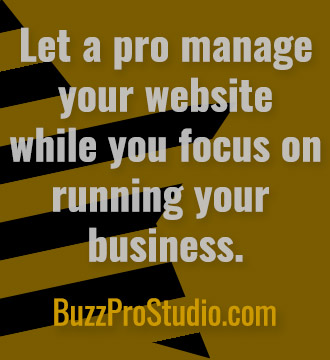This article is part of a series on web content development. To start at the beginning, check out “Introduction to Web Content Development.”
Have you ever heard of the five Ps?
Proper planning prevents poor performance.
This saying is simple and easy to remember, and it conveys an important message: the best results come from a well-laid plan. That’s what smart web content development is all about — proper planning. It all starts with a blueprint, a map you follow to take your web content from concept to completion.
But we often forget to talk about the important work that happens before we form a plan, and that is brainstorming or conceptualizing.
Every good plan kicks off with a brainstorming session.
The very first step in developing web content is to establish the concept. In this step, you identify the core purpose, and then brainstorm all your options and ideas. Later, you’ll develop a streamlined list of content that you will build and launch over time. This becomes your plan.
There are many ways to brainstorm: you can use a white board, sticky notes, or index cards. Use mind-mapping. However, a few large sheets of paper will serve just as well. In any case, you need to set up a workspace where you can jot down all your ideas and notes.
Make sure you have your computer handy too. As you build your list of ideas for web content, you’ll need to conduct research at almost every step. Keep this in mind as you go through the rest of this list — for example, if you’re not sure what all your social media options are, you’ll want to conduct research.
Brainstorm All the Web Content You’ll Need
I like to start with a list of all the types of content that (website, social media, ads, etc.). Then I drill down and get specific about what content will need to be created (text, images, etc.). Here’s a quick guide to steer you through the process:
- List your core web content — this includes your website and its most essential pages (home, about, products or services, and a contact page). This content should contain information that is absolutely necessary to communicate your business offerings and message to the online community. Don’t forget that images, videos, and links are content too! Once you’ve figured out your essential pages, create a list of additional pages that could benefit your website. These could be articles, sales pages, or individual products and services pages. Remember that you’re in the conceptual phase, so write down anything and everything that comes to mind.
- Web content is any content you own on the web. This goes beyond your website and expands into countless opportunities for online exposure, such as social media. While your content may exist in various places on the web, its core purpose is to drive traffic to your site. Brainstorm beyond your website. What are some other places where you’ll publish web content?
- List social media sites. What kind of content will you need in order to set up a presence on those sites? For example, if you set up a Twitter account, you’ll probably want a custom header and maybe even a collection of starter tweets to kick-start your Twitter campaign. On Facebook, you might want to publish a series of graphics that showcase your products and services. Jot down all your ideas!
- To drive traffic and potential customers to your site, you’ll have to advertise the site itself. That means listing your website in directories, posting ads, or buying advertising space on other websites. You might want to try a Google Ads campaign as a way to drive traffic and customers to your site. Compile a list of online advertising channels that you’d like to explore. Find out what type of content you’ll need and the specs (for example, some graphic ads or banners will have to fit particular dimensions). Take detailed notes!
- What other marketing campaigns will you launch that will require content? Are you going to publish a newsletter? You’ll need to fill it with content!
More Brainstorming Tips
Here are a few bonus tips for brainstorming:
- Check out the competition. Visit sites that offer goods and services similar to your own and check out their web content. This is an excellent way to get ideas.
- Start with your primary objective. Whether you’re selling widgets or trying to build a readership for your newsletter, know what your main goals are. Make sure every aspect of your content development plan contributes toward achieving those goals. I recommend writing this objective in big, bold letters and keeping it visible during your brainstorming sessions. If you have more than one goal, then identify your core goal and note lesser goals as well.
- You can always add to your list. Keep your brainstorming materials accessible (or transfer them into a computer file) so you can add to them whenever that light bulb in your head ignites (this will happen). You also may want to revisit your ideas later, which is another good reason to keep your brainstorming notes on file.
- Remember that brainstorming and researching takes time. You might need to spend several hours or days on this phase. If you put a lot of sweat into brainstorming, conceptualizing, and planning, then all the other phases of your web content development will go smoothly.
- Conduct searches. Use Google to see what’s buzzing in your industry. Be sure to check out the Google My Business listings and the ads that appear at the top of search-results pages. Try a wide range of search terms, including terms related to your industry, products, and services. You could spend hours doing this, possibly all of eternity. Keep track of the search terms you enter in search engines and make notes about anything interesting that comes up. Read the articles, check out the images, and visit sites that are related to your own. They don’t have to be competitors; be sure to look for sites that offer products and services that complement rather than compete with your offerings.
- Take your search to social media. Enter your most condensed search terms in social media sites like Facebook and Twitter to see how folks are treating your subject matter and what they’re saying about it. Bonus tip: don’t forget to search YouTube (you’ll find some really interesting stuff there).
- Subscribe to some newsletters to get ideas for how frequently you should communicate with your audience by email, what material you might send, and insight on newsletter design and layout.
Refine Your Ideas
Once you’ve got a massive list of ideas for web content, your next step is to refine, prioritize, and explore further. If you’ve done your legwork, then you should have a good idea which content should be developed first. You will also have some ideas that don’t look like a good fit for your specific business offerings. Finally, there will be some ideas that are unclear or require further research.
Keep working at your list, organizing, prioritizing, and refining it until a concrete plan starts to emerge. You can always get started building your web content before your plan is completely finalized. For example, you may be trying to figure out just how much you can squeeze into your budget in a single year and aren’t sure if you can do social media sites and an ad campaign. But you know you need to get those core pages on your website underway. Multi-task, and if you’re too busy, then delegate or hire out some of the work.
Next Phase: Planning
Once you’re done brainstorming, the real planning can begin. Check out the next article in this series on “Planning your Web Content Development.”
Buzz Pro Studio provides website services to small businesses and independent professionals, specializing in website design and maintenance. For more information or to get a no-obligation quote, contact me.
Melissa Donovan is the founder of Buzz Pro Studio, providing website services to small businesses and independent professionals.


